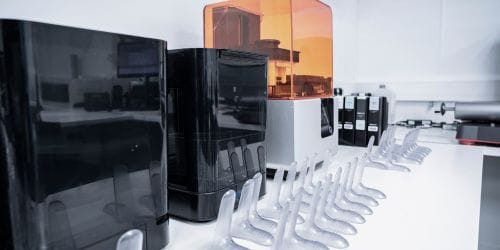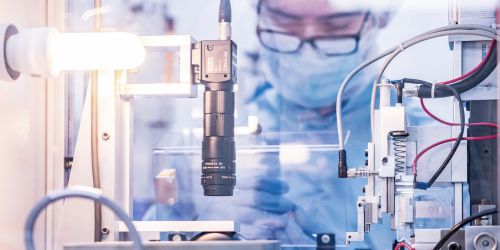In the fast-paced world of medical technology, turning an innovative idea into a market-ready product can be a complex and challenging process. Medical device prototyping plays a pivotal role in this journey, helping to bridge the gap between a concept and a fully functional, compliant product ready for mass production.
By using advanced prototyping techniques, manufacturers can fine-tune their designs, conduct critical testing, and ensure that their devices meet both user needs and regulatory requirements.
In this blog, we explore the essential steps of medical device prototyping and how they can accelerate the path from concept to market.
The importance of prototyping in medical device development
Prototyping is an essential phase in the development of medical devices. It allows designers and engineers to create working models of a concept, enabling them to test its functionality, usability, and safety. Unlike simple sketches or computer simulations, prototypes provide a tangible way to identify and resolve design flaws early in the process, saving time and reducing costs in the long run.
Prototypes also play a key role in communication with stakeholders, including regulatory bodies, investors, and end-users. By providing a physical representation of the product, companies can gather valuable feedback and make data-driven decisions before moving on to the manufacturing phase.
Key stages of medical device prototyping
Prototyping is a multi-stage process that involves several iterations and refinements. Each stage is critical in ensuring that the final product is both functional and compliant with industry standards. Let’s break down the key stages of medical device prototyping:
1. Concept Design and Proof of Concept (PoC)
The prototyping journey begins with the concept design phase, where ideas are sketched out and basic models are created. A proof of concept (PoC) prototype is often developed to demonstrate the feasibility of the design. This prototype focuses on verifying the core functionality of the device without necessarily paying attention to aesthetics or usability at this stage.
At this point, the primary goal is to validate whether the proposed solution can work as intended. The PoC helps identify potential technical challenges and ensures that the concept aligns with the project’s goals.
2. Engineering and Functional Prototypes
Once the concept is validated, the next step is to develop a functional prototype. This prototype closely mimics the final device in terms of materials, functionality, and performance. Engineers focus on refining the device’s components, ensuring that it operates as expected under real-world conditions.
This stage often involves creating multiple iterations of the prototype, allowing for continuous testing and improvements. Feedback from engineers, healthcare professionals, and end-users is crucial to refining the design and ensuring that it meets both clinical and patient needs.
3. Usability and Human Factors Testing
In medical device development, usability is a critical factor. Medical devices must not only function correctly but also be intuitive and safe for healthcare professionals and patients to use. Usability prototypes are created to test the device’s ergonomics, user interface, and interaction with other medical equipment.
Human factors testing is performed to ensure that the device is user-friendly and can be operated safely and effectively. This phase often uncovers potential risks or challenges that may arise during actual use, allowing the development team to make necessary adjustments before moving forward.
4. Regulatory Prototypes and Compliance Testing
Before a medical device can be approved for market release, it must undergo rigorous regulatory testing to ensure it meets the safety and efficacy standards of governing bodies such as the FDA or MHRA. Regulatory prototypes are built to exact specifications and tested for compliance with medical device regulations.
These prototypes must pass a series of performance tests, including biocompatibility, sterilisation, electrical safety, and mechanical durability. Thorough documentation is required to demonstrate that the device meets all relevant regulatory requirements, a key step in securing approval for market launch.
The role of advanced technologies in medical device prototyping
The field of medical device prototyping has been revolutionised by the use of advanced technologies such as 3D printing, CNC machining, and injection moulding. These technologies allow for faster, more accurate prototyping and provide greater flexibility in design iterations.
– 3D Printing: This technology enables rapid prototyping by allowing engineers to create highly detailed and accurate models within hours. 3D printing is particularly useful for testing form, fit, and function in early-stage prototypes.
– CNC Machining: CNC machines provide precision in creating functional prototypes that closely resemble the final product. This technology is ideal for producing components that require tight tolerances and high durability.
– Injection Moulding: Injection moulding is often used in the later stages of prototyping, as it allows manufacturers to produce multiple copies of the prototype using production-grade materials. This is particularly useful for testing the device’s performance in real-world conditions.
Moving from prototype to market
Once a medical device prototype has been fully developed, tested, and validated, the next step is to prepare for large-scale production. This phase involves creating detailed manufacturing plans, securing regulatory approvals, and implementing a quality management system to ensure that every device produced meets the highest standards.
The transition from prototyping to production can be a complex process, but it is essential for bringing a device to market in a timely and cost-effective manner. Manufacturers must carefully manage their supply chain, sourcing high-quality materials, and ensuring that the production process is scalable to meet demand.
Prototyping as the key to medical device success
Medical device prototyping is a critical phase in transforming innovative ideas into market-ready products. By following a structured prototyping process and utilising advanced technologies, manufacturers can ensure that their devices are not only functional but also safe, user-friendly, and compliant with regulatory standards.
The prototyping stage allows for iterative testing, improvements, and validation, all of which contribute to reducing the risk of costly mistakes later in the development cycle. In the highly regulated and competitive medical device industry, effective prototyping is essential to bringing new innovations to market successfully.
If you’re developing a medical device, investing in a robust prototyping process is the key to bridging the gap between concept and market, ensuring your product is ready for the challenges ahead. Find out more by contacting us.





